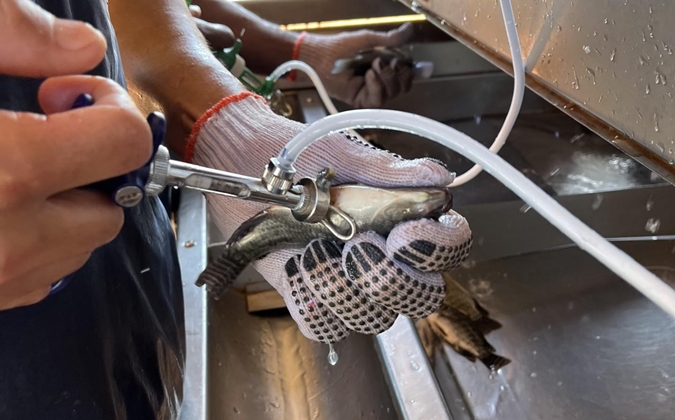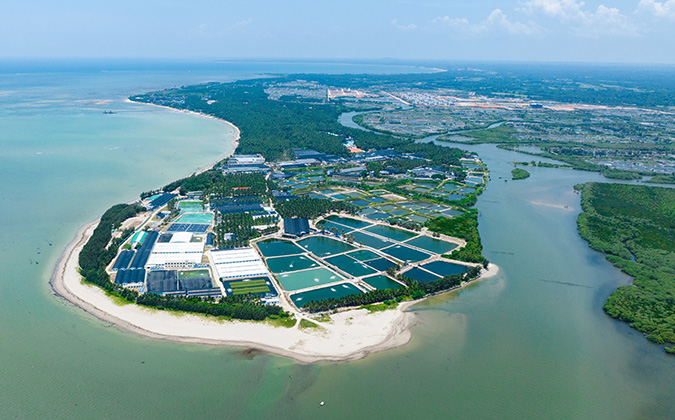
Fish Farm Forum is pleased to host this editorial page on behalf of Pharmaq.
Pharmaq
Smart strategies for Caligus control
This article includes information about authorized veterinary medicines and is intended for professional fish health personnel only.

Julio Mendoza, MVZ
An interview with Julio Mendoza, DVM
PHARMAQ, Chile
Q: Caligus is a persistent problem in Chilean salmon production and many treatments that used to work are no longer effective. Is this because they weren’t used correctly, or do Caligus eventually develop resistance to all treatments?
JM: Caligus, a type of sea lice, is a well-established parasite in the southern Pacific Ocean, and quickly develops resistance due to its high reproductive rate and short generation time from larva to adulthood. In addition, historically only one or two Caligus control products were available at any one time in Chile — and were used like unique alternatives. This surely speeded up the time in which Caligus developed resistance. Another contributing factor was that before 2015 pharmaceutical baths were applied using only sidewall tarps on cages with no bottom covering. This allowed the entry and exit of seawater, which resulted in under-dosing the pharmaceutical and contributed to the development of resistance. Since January 2015, national regulations have required complete cage coverings for antiparasitic baths.
Q: Sernapesca (Chile’s National Fish and Aquaculture Service) has a program for monitoring and controlling Caligus. What are the aims of the program and what measures does it seek to promote?
JM: Chile is a major salmon exporter. Caligus can affect the quality of the fish, thus impacting the marketability of whole fish in some export countries. So, these rules are about protecting the Chilean salmon industry. But the program also wants to establish norms for the whole industry to ensure the ability to effectively control Caligus. These norms include timing of when producers can treat; monitoring sea lice levels and establishing how many times in a row a product can be used before rotation is required.
Q: Rotation of bath products is a key element of this program. What are some important things to keep in mind when selecting sea lice treatments?
JM: It’s recommended to use products that have a 70 to 80 percent efficacy rate, based on weekly monitoring. Currently, six pharmaceutical products, from five different drug classes, are authorized in Chile for use against Caligus. The product’s duration of activity should be taken into account — longer lasting treatments reduce the overall costs versus treating more frequently. Chilean producers use a variety of rotation strategies. Azametifos, an organophosphate, is the only product where rotation is required by Sernapesca after three consecutive uses.
Q: Last year, PHARMAQ launched Alpha Flux® (hexaflumuron) in Chile. How does it work and what benefits has it been shown to offer?
JM: Alpha Flux is a chitin inhibitor, which as its name implies, stops the production of chitin, the structural component of the sea lice’s shell. Without chitin, Caligus cannot molt from the juvenile stage to the adult stage — its lifecycle is interrupted. Laboratory studies, field trials and observations from commercial use in Chile demonstrate that Alpha Flux provides a prolonged duration of protection against Caligus, during which time no other treatments are needed.
Q: Are there alternatives to licensed pharmaceuticals? How effective are they and what is their place in a strategic Caligus management program?
JM: The most popular of these alternatives with Chilean producers, although not necessarily cheaper, is the use of hydrogen peroxide baths. This treatment can be used at any time, with no limits to frequency of use. While hydrogen peroxide causes the sea lice to detach, it doesn’t kill them and they can recover and reattach to the salmon. Therefore, specifically equipped well boats must be used to capture and destroy the free-floating sea lice.
Q: Monitoring is critical to effective Caligus control. How often does testing need to be done?
JM: Sernapesca’s “Caligus vigilance” program requires producers to monitor the Caligus levels on a weekly basis. Each producer tests ten fish out of each of four cages per complex one day before treatment. The sea lice are counted by stage: juvenile, adult, and egg-bearing females. Three days after treatment those same four cages must be monitored again, just as before treatment. The results are then compared to demonstrate whether the treatment was effective or not.
Q: Getting back to rotation programs, are there any rotation suggestions for salmon producers using Alpha Flux?
JM: While we never make direct recommendations to producers, we do suggest a rotation strategy that works well based on our experience. Soon after the salmon are placed in ocean cages, use a benozoylurea or an avermectin, change to Alpha Flux with its long-lasting effects, then move to either an organophosphate and/or a deltamethrin in rotation to finish off.
Posted on: February 26, 2020







